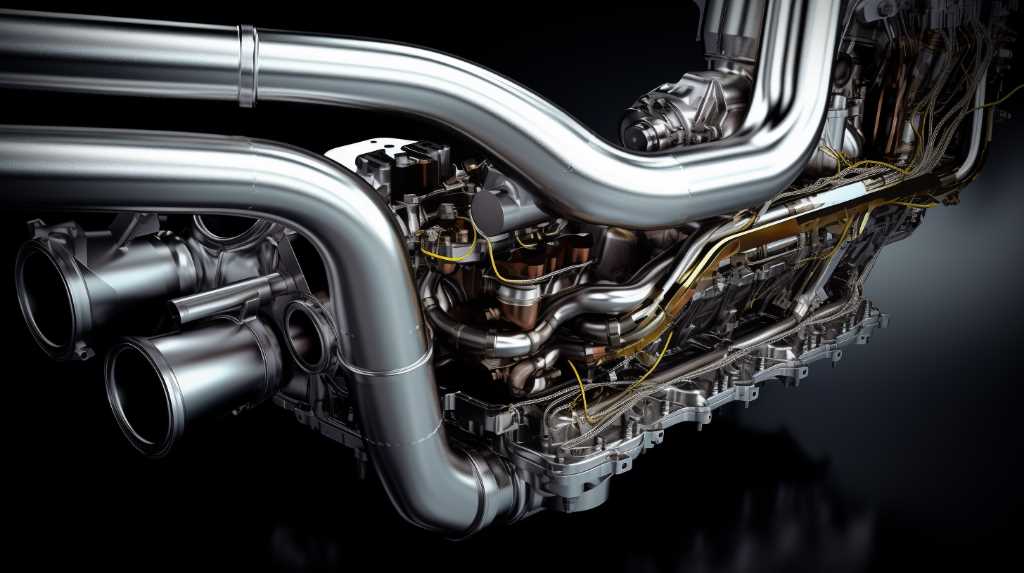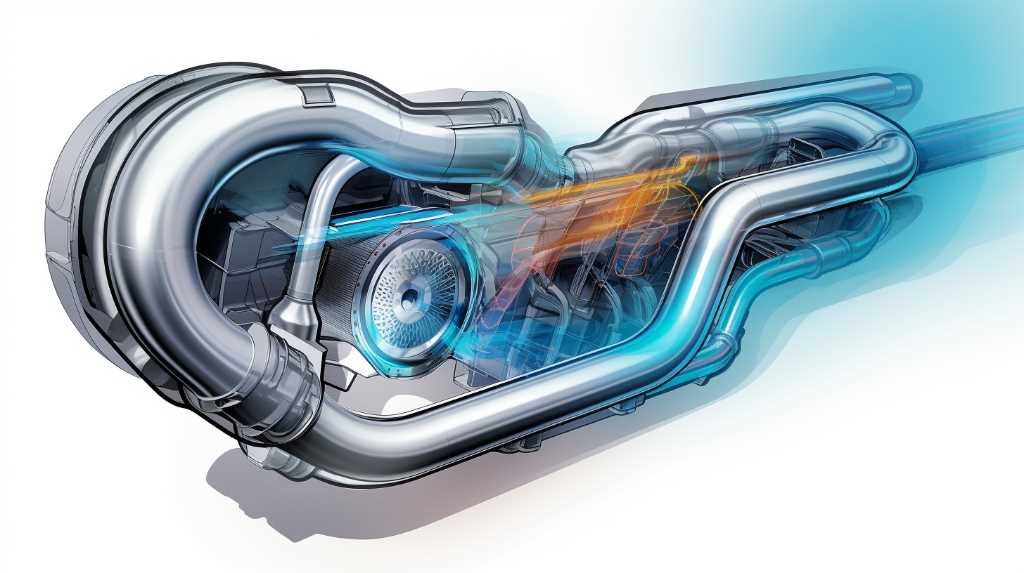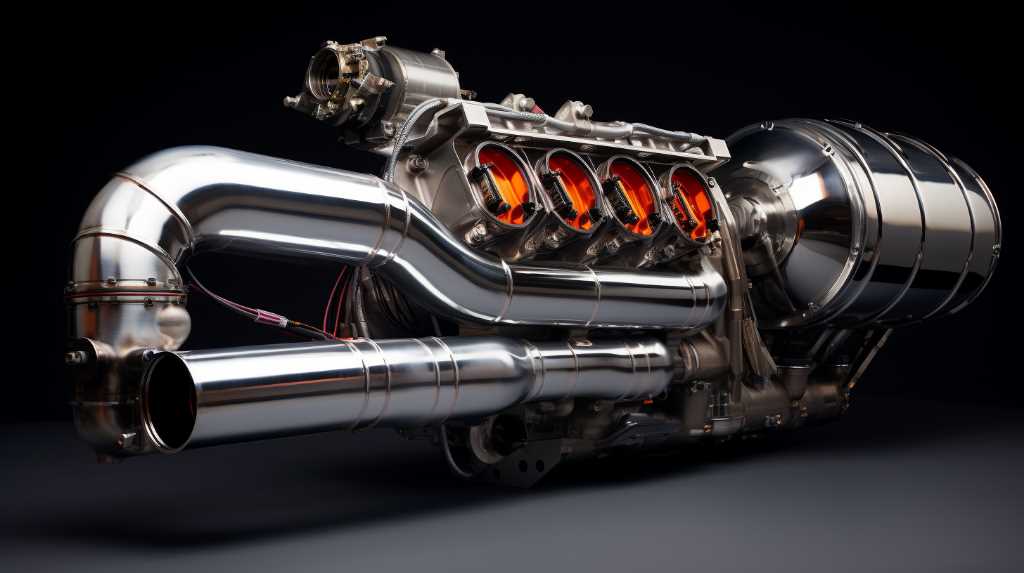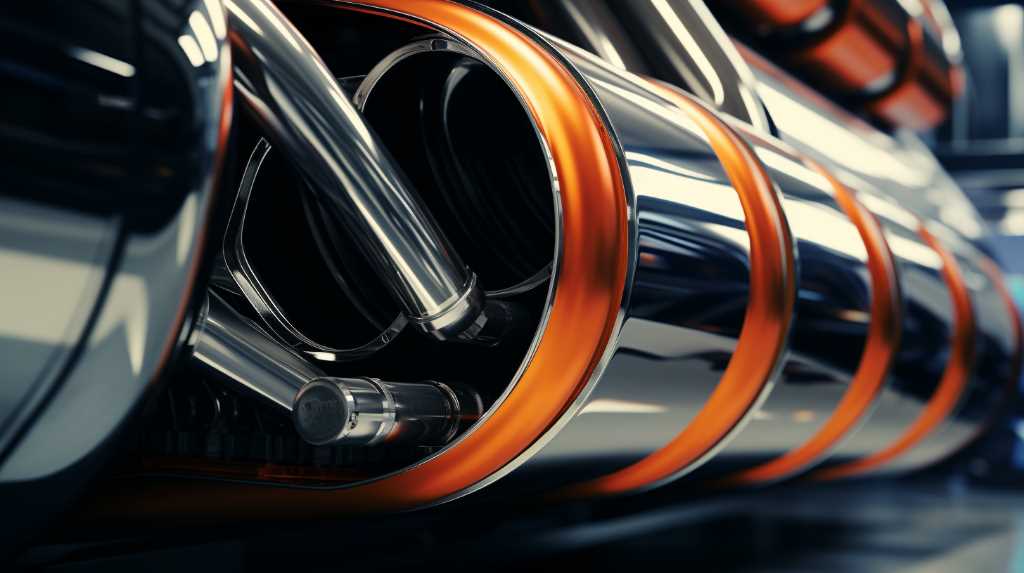Want to boost your engine’s performance? Look no further than performance exhausts! In this article, we’ll explore how upgrading to a performance exhaust system can maximize your horsepower. Discover the science behind these systems, learn about the benefits they offer, and get real-world examples of increased horsepower. Plus, we’ll guide you on choosing the right system and provide tips for installation and maintenance. Get ready to unleash the full potential of your engine with a performance exhaust!
Key Takeaways
- Performance exhaust systems aim to reduce back pressure for efficient gas expulsion.
- Increased diameter and smooth bends allow exhaust gases to exit efficiently.
- Reducing backpressure improves horsepower, torque, and throttle response.
- Performance exhaust systems increase horsepower and overall engine performance.
The Science Behind Performance Exhaust Systems

If you want to understand the science behind performance exhaust systems, you must first grasp the concept of exhaust flow dynamics. When your engine burns fuel, it creates exhaust gases that need to be expelled from the combustion chambers. These gases travel through the exhaust manifold and into the exhaust system. The flow of exhaust gases is governed by several factors, including the diameter and length of the exhaust pipes, the design of the muffler, and the presence of any bends or restrictions in the system.
One key principle behind performance exhaust systems is the idea of reducing back pressure. Back pressure occurs when exhaust gases encounter resistance as they try to exit the system. This resistance can occur due to narrow pipes, restrictive mufflers, or sharp bends. By reducing back pressure, performance exhaust systems allow the engine to expel exhaust gases more efficiently, resulting in increased horsepower and torque.
Another important aspect of performance exhaust systems is the use of mandrel-bent pipes. Mandrel bending is a process that maintains a constant diameter throughout the bend, ensuring smooth and unrestricted flow of exhaust gases. This improves exhaust flow dynamics and helps to maximize engine performance.
Understanding Backpressure and Exhaust Flow

To maximize engine performance, you need to understand the relationship between backpressure and exhaust flow. Backpressure refers to the resistance that airflow faces when exiting the engine through the exhaust system. It’s important to have a certain level of backpressure to maintain engine efficiency. However, excessive backpressure can hinder performance by restricting the flow of exhaust gases. This is where performance exhaust systems come into play.
Performance exhaust systems are designed to reduce backpressure and improve exhaust flow. By increasing the diameter of the exhaust pipes and using smooth bends, these systems allow the exhaust gases to exit the engine more efficiently. This reduces the resistance faced by the engine and enables better power output.
Reducing backpressure has several benefits for engine performance. Firstly, it helps improve horsepower and torque. With less resistance, the engine can breathe more freely, resulting in increased power output. Secondly, it enhances throttle response. The quicker the exhaust gases can exit the engine, the quicker the engine can respond to throttle inputs. Lastly, reducing backpressure can improve fuel efficiency. By improving the efficiency of exhaust gas evacuation, the engine can operate more efficiently, leading to better fuel economy.
Benefits of Upgrading to a Performance Exhaust System

If you’re looking to maximize the power of your engine, upgrading to a performance exhaust system is a smart move. Not only will it help increase your horsepower, but it will also improve your engine’s overall performance. Additionally, a performance exhaust system can provide a more aggressive and enhanced engine sound, giving your vehicle a sportier feel.
Power Gains From Exhaust
You can experience significant power gains by upgrading to a performance exhaust system. One of the main benefits of upgrading your exhaust system is the increase in horsepower. A performance exhaust system is designed to improve the flow of exhaust gases, allowing your engine to breathe more efficiently. This improved exhaust flow results in reduced back pressure, which in turn leads to increased horsepower and torque.
With a performance exhaust system, you can expect to see noticeable gains in power, especially at higher RPMs. Additionally, a performance exhaust system can also enhance the sound of your engine, giving it a deeper and more aggressive tone.
Enhanced Engine Sound
Upgrade to a performance exhaust system and experience a more dynamic and thrilling engine sound. One of the major benefits of upgrading your exhaust system is the enhanced engine sound it produces. With a performance exhaust, your engine will emit a deeper and more aggressive tone, giving your vehicle a more powerful and sporty feel.
The sound isn’t only pleasing to the ear, but it also adds to the overall driving experience, making it more exhilarating and enjoyable. Whether you’re accelerating on the highway or revving the engine at a stoplight, the enhanced engine sound will turn heads and make a statement.
Real-World Examples of Increased Horsepower With Performance Exhausts

If you’re wondering how exactly performance exhausts can increase horsepower in real-world scenarios, there are a few key points to consider. First, performance exhausts can lead to significant power gains by improving the flow of exhaust gases and reducing back pressure. Second, they can enhance engine efficiency by allowing the engine to breathe more freely, resulting in better fuel combustion and increased power output. Lastly, performance exhausts can also improve throttle response, giving your vehicle a more immediate and powerful acceleration when you step on the gas.
Power Gains From Exhausts
Get ready to experience a noticeable increase in horsepower with performance exhausts – real-world examples have shown gains of up to 15%. Performance exhausts are designed to maximize engine performance by increasing the flow of exhaust gases, which improves the overall efficiency of the engine. By reducing backpressure and increasing airflow, performance exhausts allow the engine to breathe easier, resulting in increased horsepower and torque.
One example of the power gains from performance exhausts is the Ford Mustang GT. With a stock exhaust, the Mustang GT produces around 435 horsepower. However, with a performance exhaust system installed, the horsepower can increase to over 500, a significant improvement.
Another example is the Chevrolet Corvette Z06. With a performance exhaust system, the horsepower can increase from 650 to almost 750, providing an exhilarating boost in power.
Improved Engine Efficiency
Wondering how performance exhausts can improve engine efficiency and increase horsepower? Well, let’s take a look at some real-world examples of how this works. When you upgrade to a performance exhaust system, you can expect to see a significant improvement in your engine’s efficiency. The increased exhaust flow allows for better scavenging of exhaust gases, which helps to reduce back pressure in the engine. This reduction in back pressure allows the engine to breathe more freely, resulting in improved combustion efficiency.
As a result, you’ll experience an increase in horsepower and torque. For example, a study conducted on a Ford Mustang GT showed that installing a performance exhaust system resulted in a gain of 15 horsepower and 17 lb-ft of torque.
Enhanced Throttle Response
When you upgrade to a performance exhaust system, you’ll notice an enhanced throttle response that improves your engine’s horsepower. A performance exhaust system allows for better airflow, reducing the back pressure on the engine. As a result, the engine can breathe more freely, leading to increased power output.
This enhanced throttle response means that when you press the accelerator, your engine will respond more quickly and efficiently. You’ll experience a noticeable improvement in acceleration and overall engine performance. Real-world examples have shown that cars equipped with performance exhausts have seen significant horsepower gains and quicker throttle response.
Whether you’re on the track or driving on the streets, the enhanced throttle response provided by a performance exhaust system will give you the power and performance you’re looking for.
Factors to Consider When Choosing a Performance Exhaust System

If you’re looking to upgrade your vehicle’s performance, one important factor to consider is the type of performance exhaust system you choose. There are several factors to keep in mind when making this decision. First, you need to consider the material of the exhaust system. Stainless steel is a popular choice due to its durability and resistance to corrosion. Next, you should think about the design of the system. Some performance exhaust systems feature straight-through designs, which allow for better airflow and increased horsepower. Others may have chambered designs, providing a deeper and more aggressive sound.
Additionally, you should consider the diameter of the exhaust pipes. A larger diameter can enhance the performance of your engine by allowing for better exhaust gas flow. Lastly, it’s important to consider whether you want a cat-back or an axle-back system. A cat-back system includes the entire exhaust system from the catalytic converter to the tailpipe, while an axle-back system only replaces the exhaust components from the rear axle to the tailpipe.
How to Install and Maintain Your Performance Exhaust System

To properly install and maintain your performance exhaust system, you’ll need a few basic tools and regular upkeep. When it comes to installation, it’s important to follow the manufacturer’s instructions carefully. Begin by preparing your vehicle, ensuring it’s parked on a flat and stable surface. You’ll need tools such as a jack, jack stands, and a wrench to safely lift and remove the old exhaust system.
Once the old system is detached, carefully fit the new performance exhaust system in place, making sure all components are properly aligned. Secure the system using the provided clamps or brackets, ensuring they’re tightened to the manufacturer’s specifications.
It’s crucial to check for any leaks or loose connections and make adjustments if necessary. In terms of maintenance, regular inspections are essential. Look for any signs of damage or wear, such as rust or cracks, and address them promptly. Clean the exhaust system regularly, using a mild detergent and water to remove dirt and debris. Avoid using abrasive cleaners or tools that could damage the system.
Additionally, be mindful of any changes in sound or performance, as these could indicate an issue that needs attention.
Frequently Asked Questions
What Is the Average Cost of a Performance Exhaust System?
The average cost of a performance exhaust system varies depending on the brand, materials used, and your vehicle’s make and model. It’s best to research and compare prices to find the best deal.
Will Upgrading to a Performance Exhaust System Void My Vehicle’s Warranty?
Upgrading to a performance exhaust system may void your vehicle’s warranty. It’s important to check with your manufacturer to understand their specific policies and if any modifications will affect your warranty coverage.
Can Installing a Performance Exhaust System Negatively Affect Fuel Efficiency?
Installing a performance exhaust system can potentially decrease fuel efficiency. However, it’s important to note that the impact will vary depending on various factors such as the specific system installed and your driving habits.
Are There Any Legal Restrictions on Using a Performance Exhaust System?
There may be legal restrictions on using a performance exhaust system. It’s important to research and comply with local laws regarding noise limits and emissions standards to avoid any legal issues.
Do All Vehicles Benefit Equally From a Performance Exhaust System, or Are There Certain Models That See Greater Improvements in Horsepower?
Certain vehicle models see greater improvements in horsepower with a performance exhaust system. Not all vehicles benefit equally. Upgrading your exhaust can optimize engine performance and maximize horsepower, but it’s important to research compatibility for your specific model.
Conclusion
In conclusion, upgrading to a performance exhaust system is a great way to maximize horsepower and enhance engine performance. By reducing backpressure and improving exhaust flow, these systems allow for increased power and efficiency. Real-world examples have shown significant horsepower gains with the use of performance exhausts.
When choosing a system, it’s important to consider factors such as material, design, and compatibility with your vehicle. With proper installation and maintenance, a performance exhaust system can greatly enhance your driving experience.
Related Articles
The Ultimate Guide to Performance Car Exhaust Systems
Next Exhaust Article: Performance Vs. Stock: Comparing Exhaust Systems for Better Car Performance
Previous Exhaust Article: Legal Implications of Upgrading Your Car’s Exhaust System

Hey there, I’m Terra Frank, the driving force behind Motion Performance Motor Sports. I’m thrilled to have you here, exploring the fascinating world of cars, trucks, and everything related to automotive performance and accessories.




